Are you looking for an alternative to the Raspberry Pi 4? With its affordable price, versatile operating system and wide range of applications, the Raspberry Pi has become a popular choice for many makers, hobbyists and tech enthusiasts. But as much as this single-board computer offers great power and performance, it may not be suitable or powerful enough for certain projects. Fortunately, there are other alternatives on the market that can deliver better computing capabilities than the Raspberry Pi 4. From dedicated devices to more advanced solutions such as mini-PCs and SBCs (single board computers), discover your options with this guide to all things Raspberry Pi 4 alternatives!
What is Raspberry Pi 4?
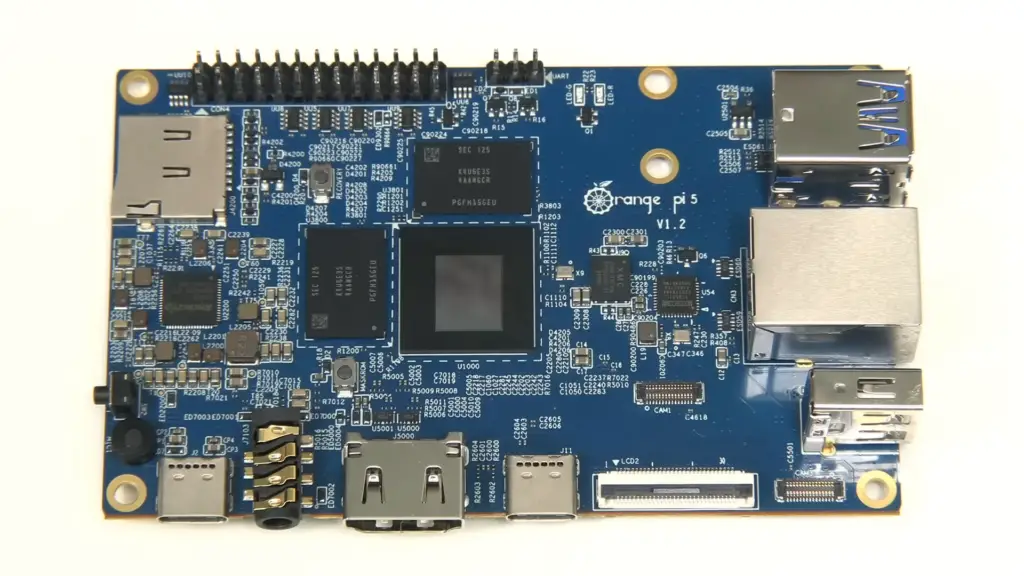
The Raspberry Pi 4 has a 1.5GHz quad-core 64-bit ARM Cortex-A72 CPU, dual monitor support with up to 4K resolution, USB 3.0 ports, Gigabit Ethernet port and Bluetooth 5.0/BLE connectivity, giving it a significant performance boost over earlier versions of the Raspberry Pi. It also comes with an on-board 802.11ac Wi-Fi and Bluetooth module, allowing it to easily connect to your home or office networks.
The Raspberry Pi 4 also supports a range of operating systems, including the latest version of Raspbian (the Raspberry Pi Foundation’s own Linux distribution) as well as Windows 10 IoT Core, Ubuntu 18.04, and other popular distributions.
The new Raspberry Pi 4 is a perfect choice for anyone looking to get into computing, offering a wide range of applications from programming and development to media streaming and gaming. Whether you’re building a robot or a home automation system, the Raspberry Pi 4 has the power and flexibility to help you achieve your goals.
So if you’re looking for an easy and affordable way to get into computing, why not give the Raspberry Pi 4 a try? You won’t be disappointed. [1]
What are the Main Functions of Raspberry Pi 4?
The Raspberry Pi 4 has become one of the most popular low-cost single board computers in the world. It offers an incredible range of features and capabilities that make it suitable for a variety of applications. Here is a list of some of the main functions and capabilities offered by the Raspberry Pi 4:
- General Computing: The Raspberry Pi 4 is a great option for general computing tasks such as web browsing, word processing, and multimedia playback. It can also be used to run small applications or office suites.
- Media Center: The Raspberry Pi 4 can be used as a low-cost media centre with the ability to stream videos, music, photos from online sources such as YouTube, Hulu, and Netflix. It can also be used to watch movies and TV shows from the local network or connected hard drives.
- Gaming: The Raspberry Pi 4 is an excellent option for retro gaming enthusiasts as it supports many classic console emulators such as NES, SNES, and Sega Master System. It is also powerful enough to run modern titles with some graphical modifications.
- Robotics: The Raspberry Pi 4 is an ideal platform for running robotics projects with its GPIO and I2C ports, allowing for the use of a wide range of sensors and peripherals. It can be used to control motors, servos, and robotic arms with relative ease.
- Home Automation: With the combination of camera and motion sensors, the Raspberry Pi 4 can be used to implement home automation projects. It is capable of automating tasks such as turning on lights when a person enters a room or locking doors when a window is opened.
- Internet of Things (IoT): The Raspberry Pi 4 supports many communication protocols such as Bluetooth, Wi-Fi, and Cellular, which makes it ideal for developing Internet of Things (IoT) projects. It can be used to monitor and control a variety of devices from anywhere in the world.
- Artificial Intelligence (AI): The Raspberry Pi 4 is capable of running complex deep learning algorithms suitable for artificial intelligence tasks such as computer vision, natural language processing, and speech recognition. It is also powerful enough to run small AI projects such as voice-controlled robots.
- Cloud Computing: The Raspberry Pi 4 can be used to build a low-cost cloud computer with the help of an external hard drive. This setup is perfect for storing and sharing files, photos, videos, and other documents in the cloud.
- Home Entertainment: The Raspberry Pi 4 can be used to build a low-cost home theater system with the ability to stream movies and TV shows from Netflix, Hulu, and other services. It is also capable of playing Blu-ray discs, CDs, and DVDs. [2]
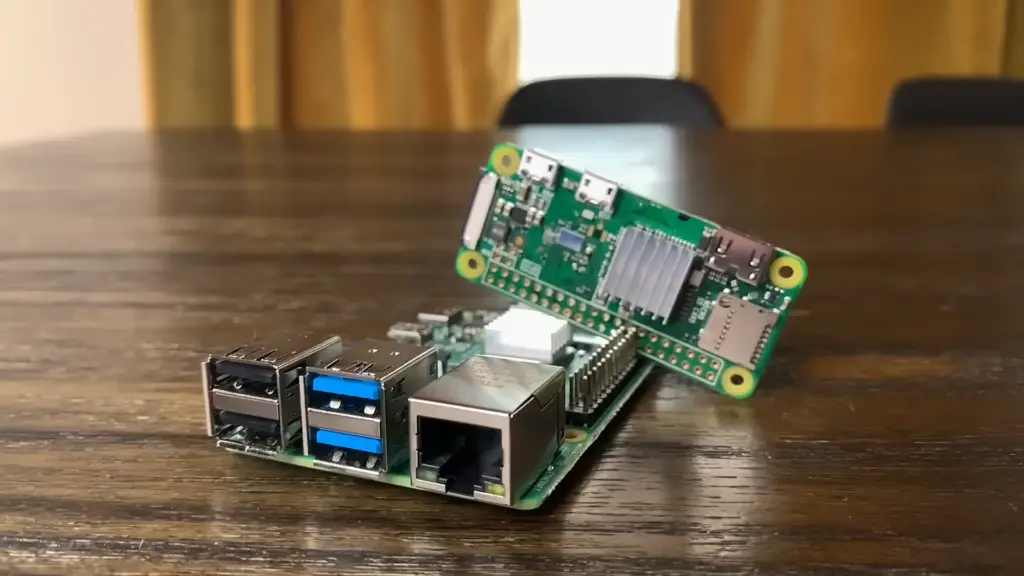
Key Benefits Of Raspberry Pi 4
It has several great features that make it stand out in comparison to other single-board computers. Here are some of the key benefits and advantages this device offers:
- Extremely Affordable: The Raspberry Pi 4 is a remarkably affordable device, coming in at just $35 for the basic model. This makes it ideal for people who want to get more out of their computing devices without breaking the bank.
- High Speed Performance: The Raspberry Pi 4 has an impressive 1.5 GHz quad-core processor, making it faster than other Raspberry Pi models. This allows you to multitask and work on multiple programs without any lag or slowdowns.
- Full Size HDMI: The full size HDMI port makes connecting the Raspberry Pi 4 to a monitor or television easy. It also supports up to 2K resolution, giving you clear and stunning visuals.
- Expanded Connectivity: The Raspberry Pi 4 supports multiple types of USB ports, including USB-C and standard micro-USB. This allows for more flexibility when it comes to connecting peripherals such as keyboards, mice, and more.
- Improved Wireless Capability: The Raspberry Pi 4 has improved wireless capabilities with dual-band 2.4GHz/ 5GHz WiFi support as well as Bluetooth 5.0. So you can easily connect it to the internet without needing an additional dongle or adapter.
- Comprehensive Software Support: Raspberry Pi 4 is supported by a wide range of software, from operating systems such as Raspbian and Ubuntu to game emulators like RetroPie and Lakka. This allows you to use your device for any task you desire.
- Low Power Consumption: The Raspberry Pi 4 draws just 2.5W of power, making it more energy-efficient than other models in its class. This makes it ideal for projects that require long periods of uptime or maximum power efficiency. [3]
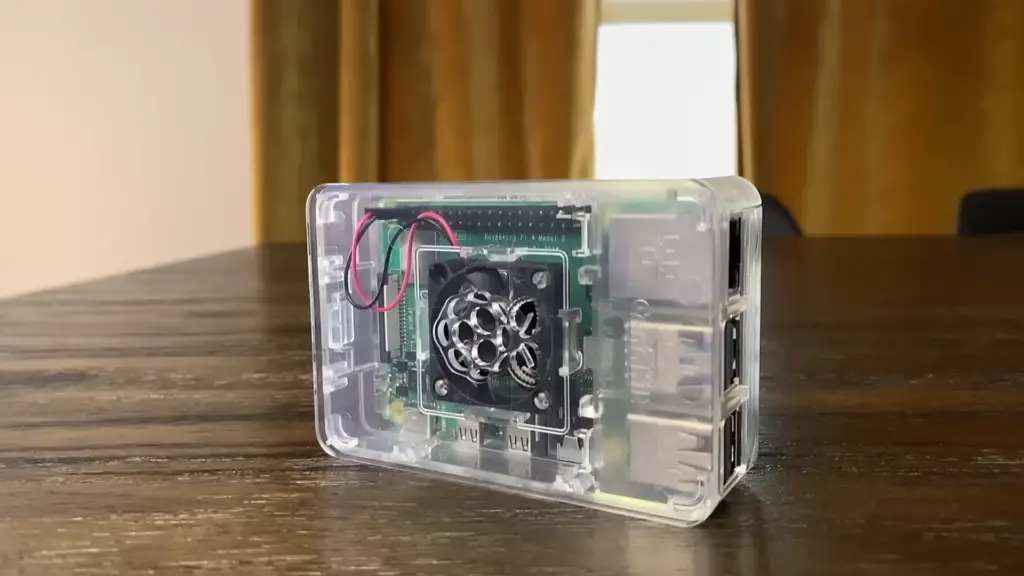
What Operating Systems Does Raspberry Pi 4 Work with?
Officially, the Raspberry Pi 4 supports the following operating systems: Raspbian, Ubuntu Core, Fedora Remix, 64-bit OS, LibreELEC/Kodi, Android Things, Windows 10 IoT Core and iOS.
- Raspbian is the official Raspberry Pi OS and it’s based on Debian, which makes it an ideal choice for inexperienced users. It comes with a wide range of software packages to get you started and can be used for various tasks including programming, gaming, media center applications or learning Linux basics.
- Ubuntu Core is a version of Ubuntu particularly optimized for the Raspberry Pi 4. It’s built on the Snappy Ubuntu Core platform and can be used for building applications using the snap package system.
- Fedora Remix is an unofficial version of Fedora designed for a wide range of ARM-based boards, including Raspberry Pi 4. It offers full support for the Python programming language, as well as other popular languages such as Ruby and Go.
- The 64-bit OS is a custom version of the Gentoo Linux operating system optimized for Raspberry Pi 4. It supports several programming languages including Python, Ruby and Go.
- LibreELEC/Kodi is a lightweight media center platform designed specifically for Raspberry Pi 4. It comes with an easy to use interface and can be used to stream media content from online services.
- Android Things is a version of the Android operating system optimized for embedded devices such as Raspberry Pi 4. It’s an ideal choice for developers who want to build connected and automated applications using Google’s AI services.
- Windows 10 IoT Core is a version of Windows 10 designed specifically for Internet of Things (IoT) devices like Raspberry Pi 4. It offers an easy way to build applications that run on the Windows platform.
- iOS is a version of Apple’s mobile operating system optimized for Raspberry Pi 4. It supports various programming languages and can be used to develop applications for iPhones, iPads and other Apple devices. [4]
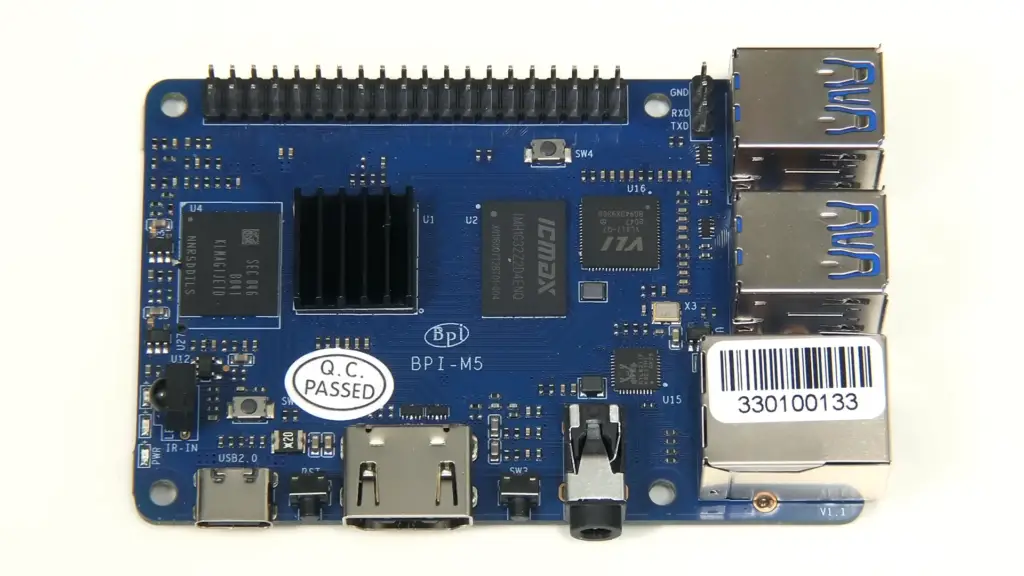
How To Choose Raspberry Pi?
With so many Raspberry Pi models to choose from, it can be hard to know which one is best for you. But don’t worry—we’ve got your back! Here are a few tips to help you find the right Raspberry Pi for your needs:
- Choose based on size and power: The two main factors for choosing a Raspberry Pi are size and power. The Raspberry Pi Zero W is the smallest and least powerful of the bunch, while the Raspberry Pi 4 Model B is the largest and most powerful. Generally speaking, smaller boards are better for simple projects with low power requirements, while larger boards are better for more complex tasks that require more computing power. [5]
- Consider your storage needs: Storage is important when it comes to Raspberry Pi boards. The Zero W and the 2 Model B don’t have an on-board storage solution, so you’ll need to provide your own microSD card for them. On the other hand, the 3 Model B+ and 4 Model B both come with built-in storage options, so you won’t need to buy a separate card if you choose one of those models.
- Think about the extras: The Raspberry Pi 4 Model B comes with a few extras that might be useful for your project, such as USB 3.0 ports and Gigabit Ethernet support. If you plan on using these features, then it’s worth investing in a Raspberry Pi 4—otherwise, a cheaper model might work just as well. [6]
Ultimately, it’s up to you to decide which Raspberry Pi model is best for your needs. Consider the size and power requirements of your project, the storage capacity you need, and any extras that might come in handy before making your decision.

Is It Worth Paying Attention to Raspberry Pi 4 Alternatives?
Currently, the Raspberry Pi 4 stands as a leading choice among single-board computers, capturing immense popularity in the market. It’s a great tool for any user who wants to make their own DIY projects or use the computer as a server platform. But with many other options out there, it may be worth considering some alternatives before you invest in a Raspberry Pi 4.
- The first thing to consider when looking at alternatives is the hardware. While the Raspberry Pi 4 has an impressive array of features, some other models offer faster processors or more RAM than what you get with the RPi4. Depending on your usage and project needs, you may want to look at a different option such as the BeagleBoard xM for its better performance.
- In addition to the hardware, you should also consider the software available for each board. While most boards run some version of Linux, not all distributions are created equal. If you plan on running more intensive applications or need a certain set of features, look for an alternative that can meet your needs.
- It’s essential to factor in price when looking at alternatives to the Raspberry Pi 4. While the RPi4 is an affordable option, some alternatives may be a bit pricier but offer more features or better performance. If cost is a key factor in your decision, compare the price tags of each board and see which one will best suit your needs without breaking the bank. [7]

10 Most Popular Raspberry Pi 4 Alternatives – List With Special Details
These Raspberry Pi 4 alternatives offer users various features and capabilities that make them each a great choice for those looking to create powerful applications or expand their home automation projects. From low-cost boards with basic features, to more advanced devices with built-in Wi-Fi and Ethernet connections – these are some of the most popular options available today.
- Arduino Uno – The world’s best-selling microcontroller board, this is a great alternative to the Raspberry Pi 4. Its open source platform makes it perfect for those looking for a more customizable device with easy access to community forums and support. In addition, its basic design enables users to quickly build projects without having to fiddle around with complex wiring and circuitry.
- BeagleBone Black – An open source, low-power computer perfect for embedded applications, the Beaglebone Black is a great Raspberry Pi 4 alternative. It comes with four USB ports and an HDMI port that allows users to easily connect other devices, such as keyboards or monitors. Furthermore, it has an on-board Ethernet connection which makes it easy to join a local network or the Internet.
- Odroid-C2 – This powerful single board computer has an octa-core processor and 2GB of RAM, which is great for those looking for more power than the Raspberry Pi 4 can provide. It also features four USB ports and an HDMI port, as well as built-in Wi-Fi and Ethernet connections – making it a great device for creating a home theater or streaming media.
- LattePanda Alpha – This Windows 10 based board computer is perfect for those looking to create complex projects that require an operating system like Windows, but the power of a Raspberry Pi 4. It has four USB ports, an HDMI port, Bluetooth and Wi-Fi, as well as compatibility with Arduino and Raspberry Pi shields – making it a great choice for those who want more flexibility in their projects.
- ODROID-XU4 – This open source single board computer features an octa-core processor and 2GB of RAM, making it perfect for those looking to create powerful applications that require considerable processing power. It supports Wi-Fi, Bluetooth, USB 3.0 and Gigabit Ethernet connections, as well as two HDMI ports – making it a great choice for those looking to create home automation projects or stream media content from the Internet.
- CHIP – This low-cost board computer is designed for use with Linux operating systems but can also be used with Arduino shields. It features Wi-Fi, Bluetooth and USB connections, as well as an HDMI port – making it perfect for those who need a powerful but low-cost device to create projects with.
- UDOO Quad – This is another great alternative to the Raspberry Pi 4 that comes with a quad-core processor and 2GB of RAM. It also has two USB ports, an HDMI port and Gigabit Ethernet connection – making it perfect for those looking to create complex projects with multiple components.
- Banana Pi – This open source single board computer is a great alternative to the Raspberry Pi 4 that features Wi-Fi, Bluetooth and two USB ports. It also has an HDMI port and a Gigabit Ethernet connection – making it ideal for those looking to create home automation projects or stream media content from the Internet.
- MinnowBoard – This low-power computer is perfect for embedded and industrial applications that require a powerful yet energy-efficient device. It features an Atom processor, 1GB of RAM, four USB ports and an HDMI port – making it great for those who need a reliable device to create their projects.
- Up 2 Board – This powerful single board computer comes with an Intel Atom processor and 4GB of RAM, making it perfect for those looking to create complex applications that require considerable processing power. It also features Wi-Fi, Bluetooth and USB 3.0 connections – as well as an HDMI port – making it a great choice for those who want to take their projects to the next level. [8]
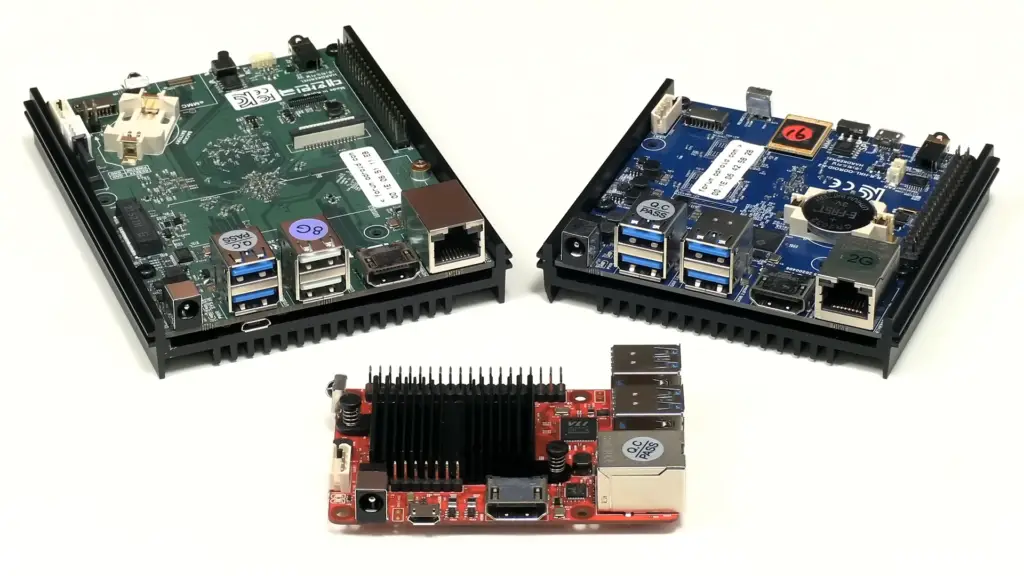
FAQs
What can I use instead of a Raspberry Pi 4?
When it comes to Raspberry Pi 4 alternatives, there are many options available. Depending on the type of project you’re working on, different solutions may be more appropriate than others. Some potential options include the popular Arduino and BeagleBone boards, as well as other single board computers like the LattePanda and UDOO X86 II SBCs. Each option has its own advantages and disadvantages, so it’s important to research each one carefully before deciding which is best for your project.
What computer is like Raspberry Pi 400?
The Raspberry Pi 400 is a great pocket-sized computer for those looking to tinker and create projects that require minimal computing power. But what if you need more power than the Pi 400 can provide? Enter the world of Raspberry Pi 4 alternatives.
They offer more processing capabilities, memory, and storage options than their Raspberry Pi 4 counterpart. These alternatives are ideal for more intricate programming projects and tasks that require extra power, such as artificial intelligence (AI) and machine learning applications. Additionally, they come with a range of other features, including support for multiple operating systems, an onboard GPU/VPU for graphics-intensive computing tasks, and the ability to connect peripherals like keyboards and mice.
Whether you’re a seasoned programmer or just getting started, Raspberry Pi 4 alternatives can help take your projects to the next level. With so many powerful and affordable options available, it’s worth considering what an alternative computer could do for you. Consider all aspects of the device—cost, performance, features—before making a decision on which one is right for you.
Why are Raspberry Pi so cheap?
The Raspberry Pi 4 is an affordable single-board computer. Its incredible price point is a result of several factors, including the low-cost components used to build it, as well as its efficient production process.
At its core, the Raspberry Pi 4 includes an impressive set of features: a quad-core ARM processor, 1GB RAM, 1080p video output, and a plethora of ports. It’s also very power efficient, drawing just 5W at peak performance. This low-power usage, combined with its small form factor make the Raspberry Pi 4 an ideal choice for projects such as home automation, robotics, or creating custom media centers.
The Raspberry Pi 4 is also incredibly versatile: it runs multiple Linux operating systems and can be used for programming, web surfing, or even playing games. It’s also the ideal choice for educational projects: Students of all ages can use it to learn coding and robotics concepts in a fun and interactive way.
The affordability of the Raspberry Pi 4 makes it an attractive option for DIY projects as well. From creating gaming consoles to robots to home automation systems, the Raspberry Pi 4 can be used to build almost anything.
This price is due to the desire to be affordable for everyone!
Why is Raspberry Pi better than Arduino?
The Raspberry Pi 4 is an impressively robust and adaptable SBC. It has many advantages over Arduino, making it a great choice for projects ranging from home automation to robotics. The main differences lie in the processing power, memory, software support, and connectivity of each device.
The Raspberry Pi 4 offers up to four times the computing power of the original Raspberry Pi, as well as an increase in RAM and storage capacity. Thanks to its powerful ARM-based processor, the Pi 4 can run multiple applications simultaneously and easily handle graphics and multimedia tasks. Additionally, it supports a wide selection of languages including Python, C/C++, Java and more – making it perfect for creating complex projects.
The Raspberry Pi 4 also offers greatly expanded connectivity options compared to Arduino. With a variety of ports available including USB 3.0, HDMI, Ethernet and more, you can easily add extensions such as wireless adapters or external hard drives for further storage capacity.
Useful Video: Raspberry Pi 4 Alternatives: Five ARM Contenders
Conclusion
Whether you’re a hobbyist looking to tinker with the latest technologies or an experienced user on a tight budget, there is a Raspberry Pi 4 alternative to suit your needs. There are many wonderful options available that feature flexible storage and speedy concepts, all centered around providing awesome computational power for generating projects or simply for powering your gaming board. It is good to consider some of the alternative options listed in this article when considering the capabilities of these great microcomputer boards – because each unit has its own unique features and benefits! Additionally, exploring device differences, like those between Raspberry Pi 4 and alternatives can help you find exactly what you need to create the perfect project. After all, having a successful project is often directly related to choosing the right tools for it!
References
- https://www.zdnet.com/article/what-is-the-raspberry-pi-4-everything-you-need-to-know-about-the-tiny-low-cost-computer/
- https://www.spiceworks.com/tech/networking/articles/what-is-raspberry-pi/
- https://www.tomshardware.com/reviews/raspberry-pi-4
- https://emteria.com/blog/raspberry-pi-4-os
- https://www.tomshardware.com/how-to/raspberry-pi-buying-guide
- https://opensource.com/article/19/3/which-raspberry-pi-choose
- https://raspians.com/raspberry-pi-4-alternatives/
- https://beebom.com/best-raspberry-pi-4-alternatives/





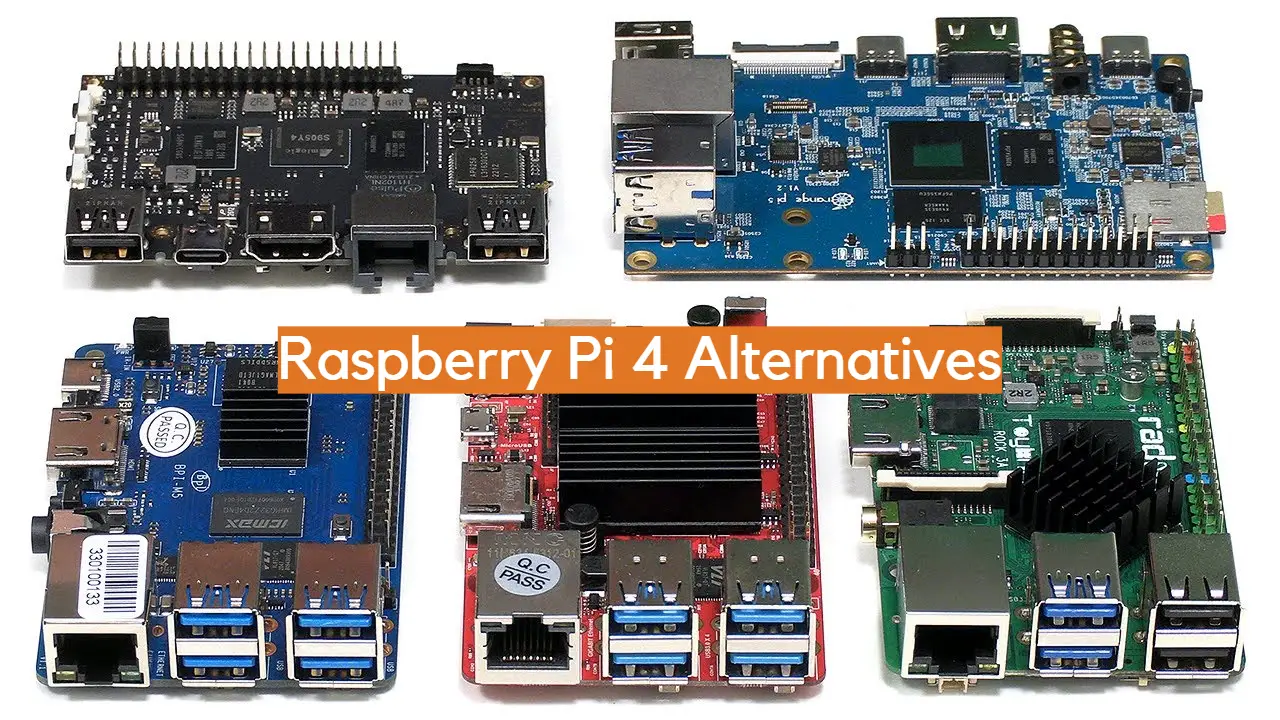







Leave a Reply